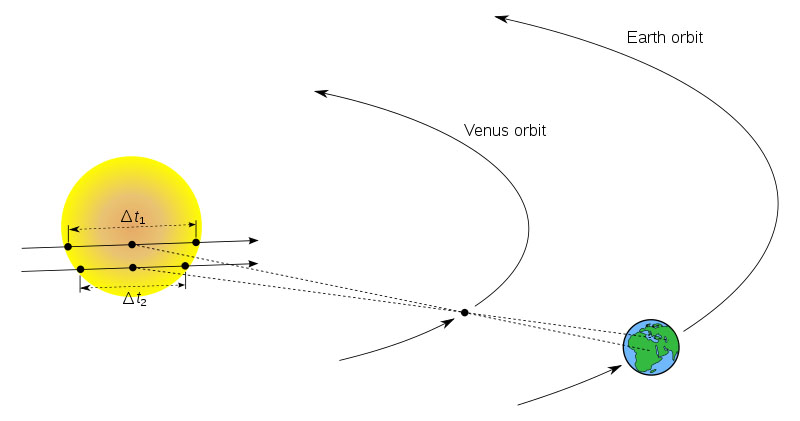 Transit of Venus 08/06/2004 - (Tony Cook)
Transit of Venus 08/06/2004 - (Tony Cook)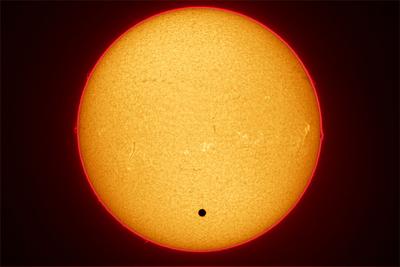 (Ray Emery)
(Ray Emery) 05hr 30m 45s
05hr 30m 45s 05hr 36m 33s
05hr 36m 33s 05hr 45m 19s
05hr 45m 19s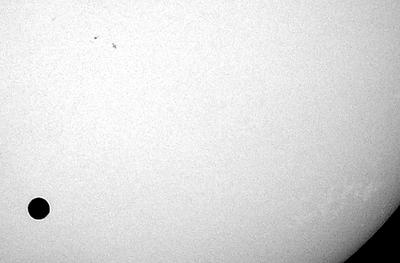 08hr 33m 17s
08hr 33m 17s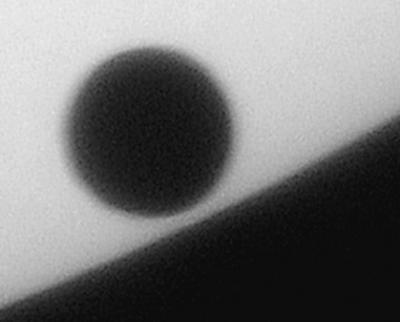 11hr 02m 35s
11hr 02m 35s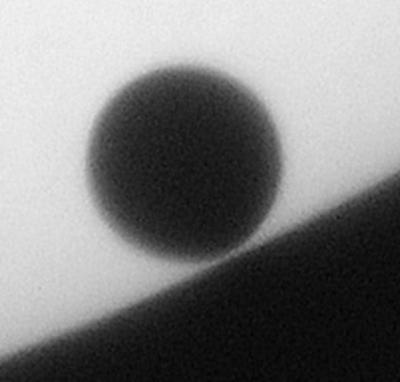 11hr 03m 39s
11hr 03m 39s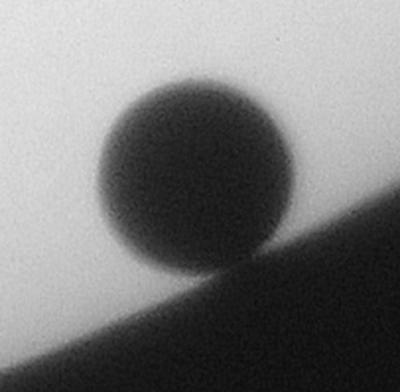 11hr 04m 11s
11hr 04m 11s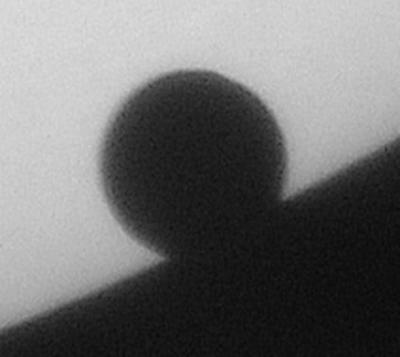 11hr 06m 27s
11hr 06m 27s 11hr 10m 11 s
11hr 10m 11 s 11hr 12m 25s
11hr 12m 25s 11hr 16m 21s
11hr 16m 21s 11hr 20m 53s
11hr 20m 53s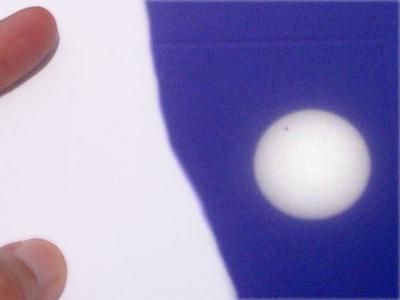 (Vad Falcone)
(Vad Falcone)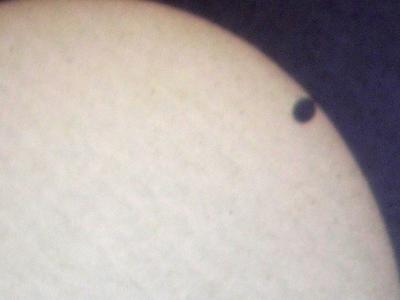 (Vad Falcone)
(Vad Falcone)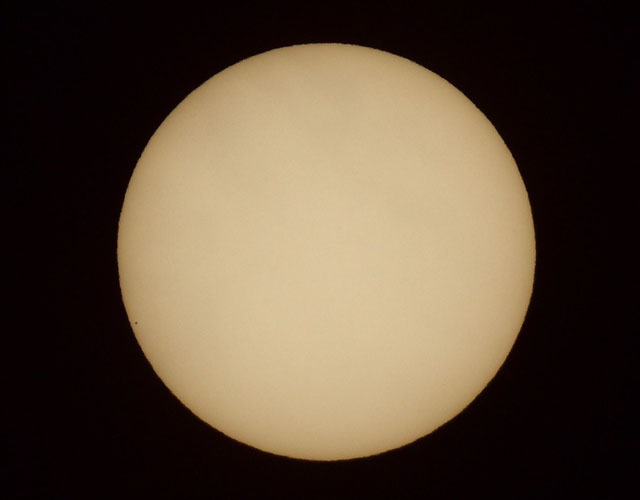 Transit of Mercury 11/11/2019 (Ray Emery)
Transit of Mercury 11/11/2019 (Ray Emery)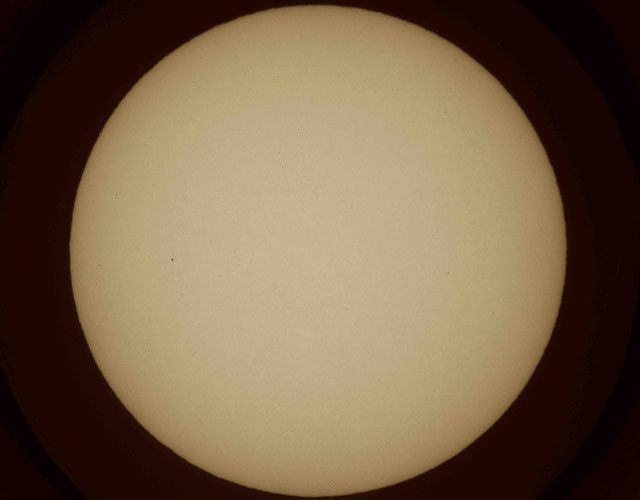 Transit of Mercury 11/11/2019 (Ray Emery)
Transit of Mercury 11/11/2019 (Ray Emery)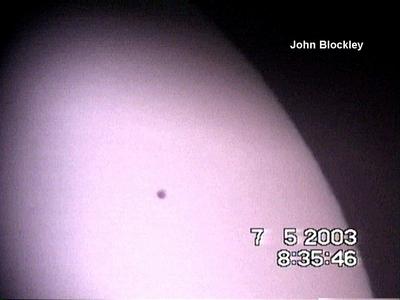 Transit of Mercury 07/05/2003
Transit of Mercury 07/05/2003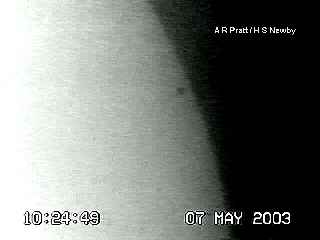
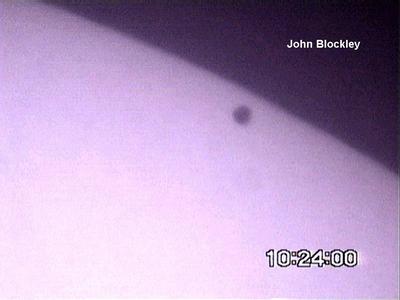
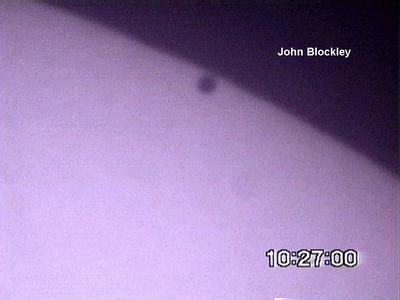

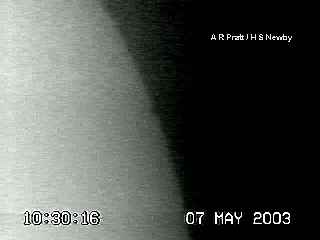
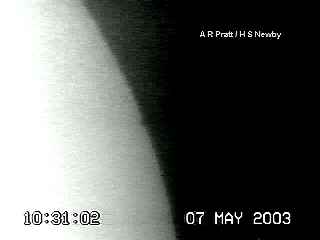
Information...
As both Mercury and Venus lie within Earth's orbit around the Sun, it is possible to occasonally view them as they pass in front of the Sun - a planetary transit.
As Mercury, orbits the Sun about every 88 days, transits occur relatively frequently. i.e. 13-14 occur each century, with next due on 13th Nov. 1932. Venus on the other hand, with it's longer orbital period of about 225 days, only transits the Sun infrequently, with 243 year gaps between two transists which occur 8 years apart. In this case the next pair of transits won't take place until 10-11 Dec. 2117 and 8 Dec. 2125.
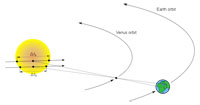
Historically, transits have allowed scientists to calculate the distance from the Earth to the Sun, by observing the transit from different locations on Earth. By measuring the time taken for the transistions to take place, and then using the latitude & longitude from the obervation points, the distance to the Sun can be calculated.
In more recent years, transits have also proved useful in developing techniques to study expolanets around more distant stars.
It is also possible to get transits of both Mercury and Venus at the same time, but not very often! Such an event last occurred in year 373,173 BC and the next is due in year 69,163 AD...
For much more detailed info. see the Venus Transit and Mercury Transit entries in Wikipedia.
